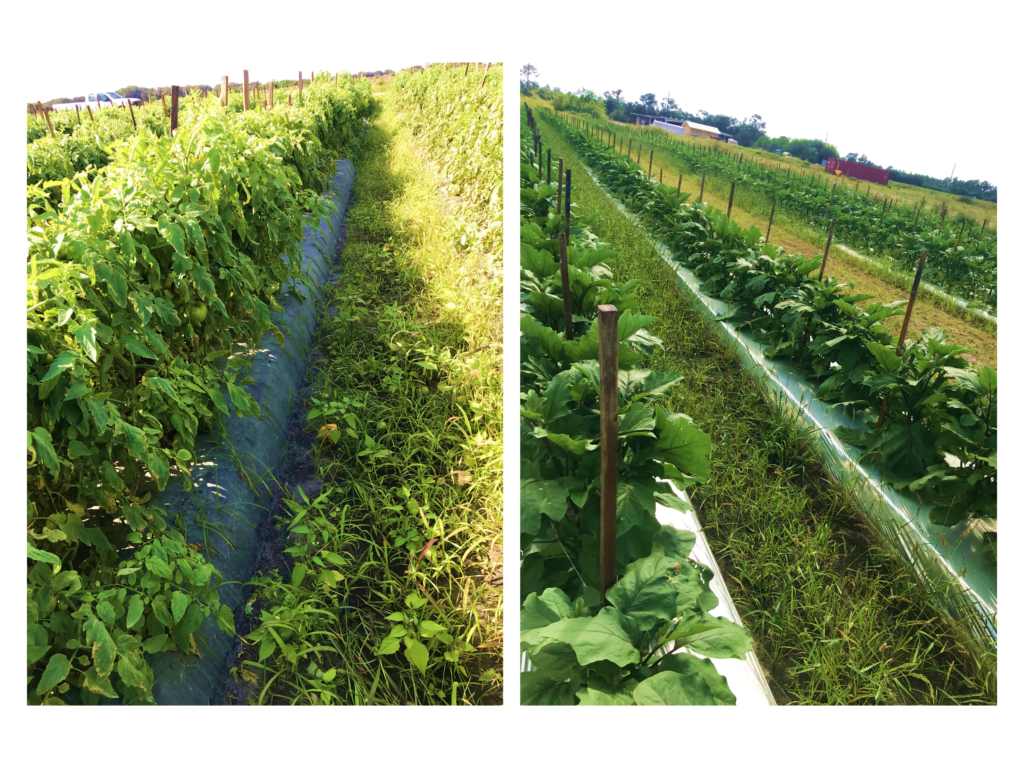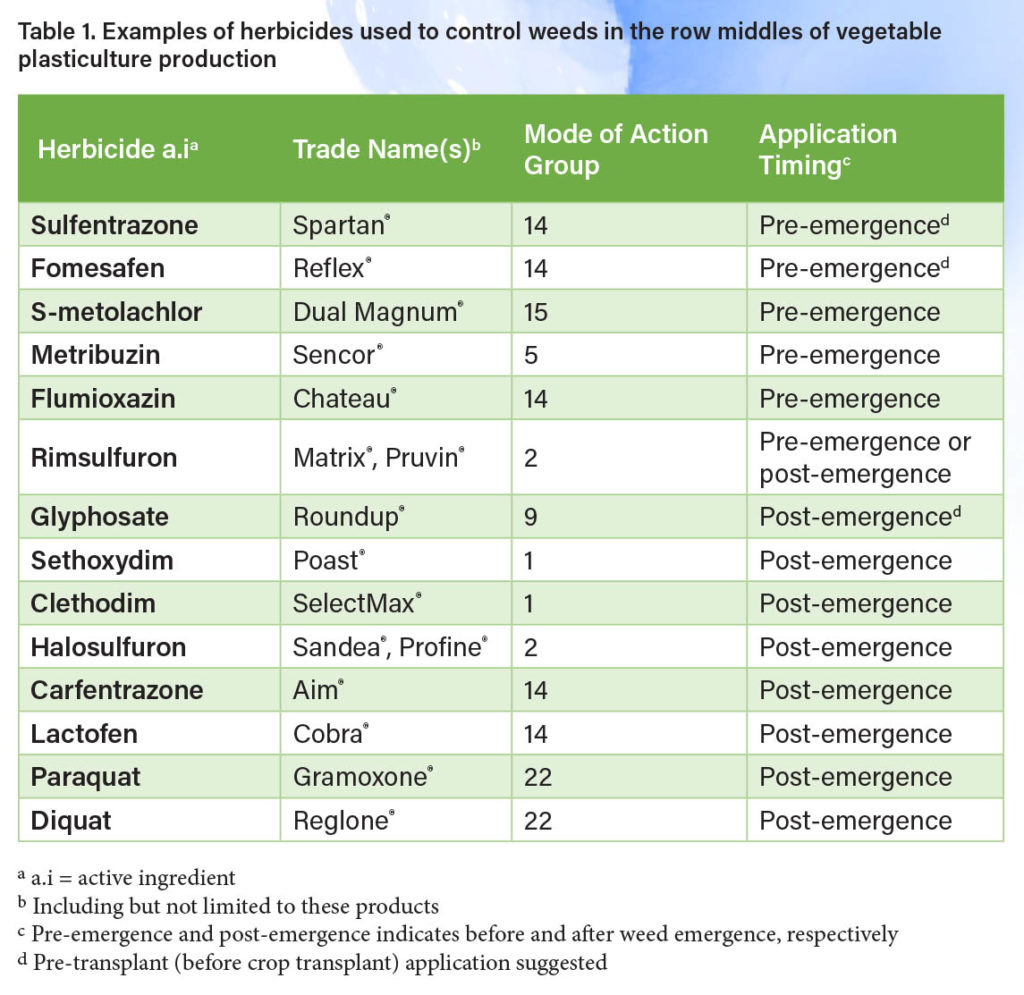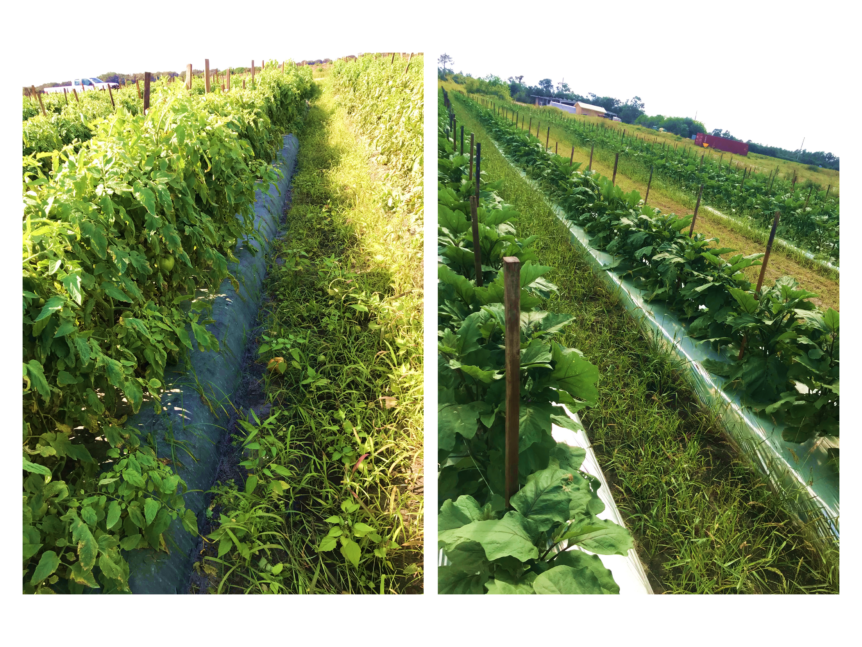
By Ramdas Kanissery
Battling weeds is a real struggle in vegetable plasticulture production — not just in the plastic mulched planting beds but also in the row-middle spaces between beds (see Figure 1). Weeds in the row middles can compete with the main crop while playing host to insect pests, nematodes and pathogens.
Tackling row-middle weeds comes with its own set of challenges — a relatively small selection of approved herbicides and the looming risk of spray drift onto the crops. Table 1 lists some examples of current herbicides used for weed control in row middles of vegetable plasticulture production in Florida.
Application Considerations
Use post-emergent herbicides when weeds are young and growing actively because that’s when they are most sensitive to the active ingredients. For pre-emergent herbicides to work effectively, it’s ideal to apply them when there are few or no existing weeds. Too many weeds can block the pre-emergent herbicide from reaching the soil effectively.
It’s important to use the right surfactants and other additives as mentioned on the label. For example, some herbicides work best when the spray solution has a pH of 4 to 6. If the water on the farm is hard (pH 7 or 8), it might make the herbicide less effective. To fix this, add a pH buffer or ammonium sulfate when mixing in the tank to improve herbicide performance. Achieving uniform coverage is crucial for herbicide effectiveness in vegetable row middles. To do this, make sure to calibrate the sprayer correctly by testing the flow rate of the pump and nozzle combination, checking nozzle angles and following the product label for the right application rates.
New Option
According to the glufosinate supplemental label, a maximum of two applications in the row middle can be made during the crop season, without exceeding a total of 62 fluid ounces per acre per season. Also, a gap of at least 14 days between applications is recommended. There is a preharvest interval (time gap between the last application and harvesting) of 14 days for cucumber and summer squash. For cantaloupe, pepper, tomato and watermelon, 30 days is suggested while using this product.
For the best results, apply glufosinate on warm, sunny days using a shielded sprayer. Apply this herbicide when the target weeds are less than 4 inches tall or wide. Note that some larger or perennial weeds may regrow after application. Also, ensure at least six hours of rain-free weather after application.
For a complete list of herbicides, rates and crop-specific information, consult the University of Florida Institute of Food and Agricultural Sciences Extension Vegetable Production Handbook of Florida.
Ramdas Kanissery is an assistant professor at the University of Florida Institute of Food and Agricultural Sciences Southwest Florida Research and Education Center in Immokalee.











